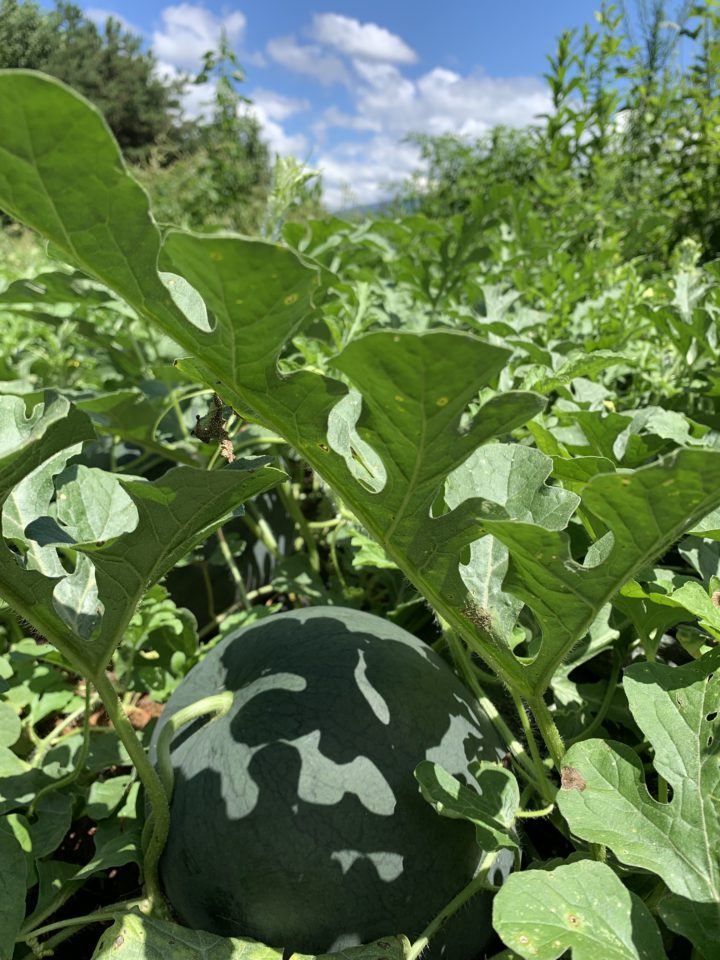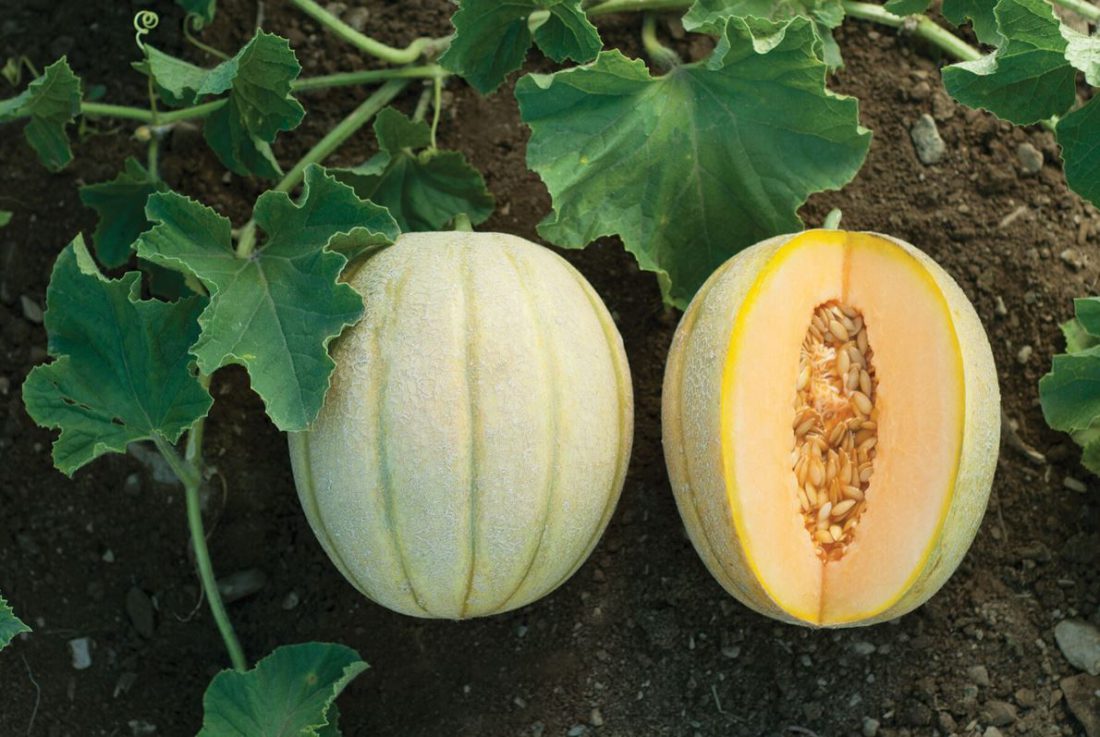Sunny, rainy greetings to you as we swirl our way toward autumn. Fruits are ripening, and pests and diseases are mounting as the warm weather fills our hearts and bellies with bounty. Please send any gardening questions to me at gardening@mountainx.com and I’ll answer them next month.
Smoke and plants
We’ve had so much smoke in the air this summer, how do the hazy skies impact plants in the garden?
Our air quality here in Western North Carolina has been greatly impacted by Canadian wildfires this summer. Several weeks of smoky skies have kept folks indoors and made mountain sunsets turn an eerie shade of orange. You may have heard warnings about staying inside or wearing a mask to protect your lungs, especially if you’re an elder, a child or your respiratory system is compromised. But what about the plants? They can’t stay indoors or wear masks; they have to keep breathing and growing no matter what the weather.
The impacts of smoky air on agriculture are varied, but overall, it’s not a pretty picture. First, when air quality is low and unsafe for folks to work in, then crops don’t get tended as they need to be. If you aren’t able to go out into your garden to water or weed, for example, because the air is dangerous to breathe, then those crops won’t thrive as well as they would with your care.
Second, smoke acts a lot like cloud cover or even shade cloth and deflects some of the sunlight coming to Earth, reducing the amount of energy plants have for photosynthesis. This can have serious impacts on crop yields, slowing growth and ripening, and resulting in smaller harvests. Along with deflecting light, smoke also scatters it. The impact of this action on plant growth is a little less clear. More diffuse light can actually be used more efficiently by plants, but this applies more to multilayer canopies like forests, and not as much to gardens. Also, the decreased overall availability of light from smoke is likely to cancel out any potential benefits from diffusion.
Finally, smoke is made up of many parts, including pollutants like nitrogen oxides and volatile organic compounds. These are precursors to ozone, which forms when the substances are in the presence of sunlight. This ground-level ozone is very damaging to plants and can reduce their growth and yields.
Unfortunately, there’s not much we can do to protect our gardens from the negative impacts of smoke. When smoky conditions persist for several days or weeks, it’s worthwhile to get out and tend the garden, even if that means gardening with a mask on. We can also continue to make choices that support healing and balance for the planet, hopefully reducing the frequency and intensity of wildfires over time.
Solving a cactus mystery
I like to raise grafted cacti in pots. I have one with a green stem and a grafted pink ball cactus on top. The green stem has sprouted a “branch” coming out from the side with fine root hairs on it. Can I cut off the branch and pot it up? Also, do you have any idea what variety of cactus this is?
This question is outside of the purview of gardening but was sent in as a hand-typed letter with a colorful drawing by a reader who doesn’t have access to a computer, so I’m inclined to give it a go. I’m happy to offer the best answer I’ve got and some suggestions about how to learn more.
The “branch” is simply the bottom, green variety of cactus working to continue growing and expanding itself. It is not a new plant, but a genetic clone of the original plant. Many cacti can be propagated like this and are fairly easy to root. You don’t even need to cut off a section of the original stalk, just remove the branch and place it in some cactus-growing mix (or a regular potting mix with some added sand to increase drainage). The little root hairs that you see will soon grow down into the potting mix and become true roots.
As far as variety goes, I’m not a cactus aficionado, so I have no idea there, but you could go into Rosarina Plant Shop in downtown Asheville and ask the workers there. The store specializes in indoor plants and cacti. Also, it looks as if we’ve got a nice selection of cactus-growing books in the Buncombe County Library System. Here are some titles that might be worth checking out: Happy Cactus: Cacti, Succulents and More! and The Gardener’s Guide to Succulents: A Handbook of over 125 Exquisite Varieties of Succulents and Cacti. Good luck with your surprise new cactus friend.
Melons: Timing is everything
How can I tell when melons are ripe and ready to harvest?
Wow, there is hardly anything more disappointing than watching a big, beautiful melon ripen in your garden, only to pick it and slice into an insipid, bland and watery underripe fruit. I will be honest here and say that while I’ve got some good tips, I haven’t found any foolproof way to guarantee melon ripeness 100% of the time. However, I’ve definitely improved my success rate over the years.

Growing melons at all in our climate is pretty challenging. These glowing orbs like to ripen in hot and dry conditions and are quite susceptible to fungal diseases. Here in the rainy mountains, fungi rule, and many melons rot before they have a chance to ripen. This is a place where I bow to the power of hybrid varieties. My experiments with open-pollinated heirlooms have been much less successful than these two hybrids that seem to yield pretty consistently: halona and dove. These are both muskmelons, a group that is gently or deeply lobed, has a brown netting over the skin, and boasts an intoxicating aroma. These melons are ripe at “full slip,” meaning that they will easily disconnect from their parent vine with a gentle tug. Muskmelons also begin to smell sweet and ripe when they’re ready.
Watermelons are another group that can do well here, as long as they get what they need to grow well. Thumping on a ripe watermelon should produce a low, hollow sound. The specific tone of this sound will vary based on the size and variety you’re dealing with. Another way to determine ripeness with watermelons is to press on the fruit with your thumb and forefinger, letting them slide away from one another. If the fruit has any give, it’s ripe. Unripe fruits will be very firm and not springy.
Some other tricks for ripening melons here is choosing the right varieties that will mature soon enough. Our mountain growing season is on the shorter side, so melons that mature within less than 90 days are ideal, and under 80 days are more of a sure bet. Melons require high fertility to produce well and prefer slightly alkaline soil. Throwing a handful of wood ashes and a shovel or bucket full of compost in the hole or mound where you’ll transplant your melons can help. Watermelons are drought-tolerant, while other kinds of melons require very regular watering. As fruits grow and ripen, you can gently turn them from time to time, so that the same side of the fruit isn’t always resting on the ground. This place of contact is the most likely to rot, so moving the melon and getting sun on all sides can help keep fungal issues at bay.



Before you comment
The comments section is here to provide a platform for civil dialogue on the issues we face together as a local community. Xpress is committed to offering this platform for all voices, but when the tone of the discussion gets nasty or strays off topic, we believe many people choose not to participate. Xpress editors are determined to moderate comments to ensure a constructive interchange is maintained. All comments judged not to be in keeping with the spirit of civil discourse will be removed and repeat violators will be banned. See here for our terms of service. Thank you for being part of this effort to promote respectful discussion.